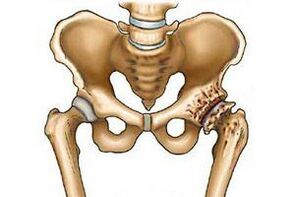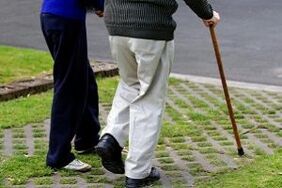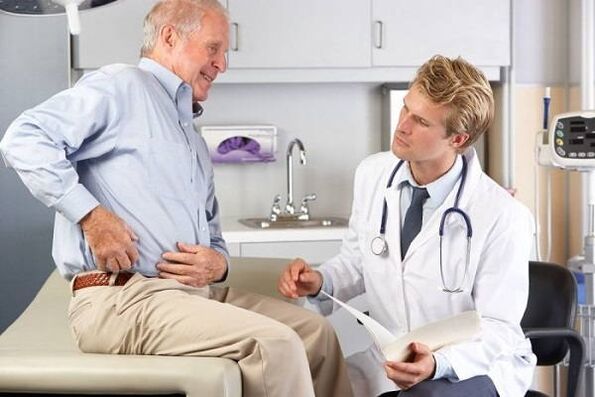One of the most common pathologies of the musculoskeletal system is deforming arthrosis of the hip joint. The progressive process affects the hyaline cartilage, destroying bone and connective tissue. Both a mobile connection and both are affected. The second name of the disease is coxarthrosis, which is most often manifested in women from 40 years old.
Reasons for the development of the disease
The disease is not hereditary, but the presence of genetic characteristics of tissues and bones can provoke its development and transmission from parents to children. Hip osteoarthritis is considered an age-related problem, which is caused by the aging of the body. There are cases when the process of destruction of the hip joints begins in young people.
The main causes of arthrosis of the hip include pathologies that provoke the pathological process:
- tissue injury (femoral neck fracture, contusion);
- intense physical activity (sports, weight lifting);
- joint infection (arthritis);
- death of the femoral head;
- obesity;
- endocrine diseases such as diabetes mellitus, metabolic disorders;
- scoliosis.
The hip joint is destroyed under the influence of various factors. Therefore, people with a genetic predisposition, overweight and heart disease are at risk.
disease varieties

Arthrosis of the hip joint is of two types:
- Primary or idiopathic. Develops after 50 years. It differs in symmetrical lesions of the joints. The course is disappointing, it is difficult to determine the cause of the destruction of the pelvic joints.
- Secondary. It is characteristic of a young age, the impetus is various pathologies. Defeat of a joint is characteristic: left or right. The course is slow, and if you take the drugs prescribed by the doctor and follow the recommendations, the pathology responds well to treatment.
The disease leads to complete destruction of the joint.
Degrees of coxarthrosis and characteristic symptoms
The process of destruction of the hip joint occurs gradually, each of the 3 stages is accompanied by distinct symptoms:
- Initial state. Arthrosis of the 1st degree of the hip joint is accompanied by signs:
- intermittent hip pain caused by exercise, pelvic stress;
- groin discomfort;
- lack of movement restrictions;
- slight narrowing of the joint space.

- 2nd degree disease. There is an exacerbation, in the pelvic area, the local temperature rises. Pain at rest and during exertion. The development of the 2nd degree of arthrosis of the hip joint is accompanied by the following symptoms:
- the pain syndrome is intrusive and intense, especially at night;
- characteristic "initial" pain accompanying movements after rest;
- restriction of movement, which leads to cartilage destruction and inflammation;
- the appearance of lameness;
- difficulty in abducting the foot, limb flexion;
- muscle atrophy, in which the affected leg appears limp;
- the joint space is narrowed, there is bone compaction during radiography.
- Finally, phase 3. It talks about irreversible processes. It is accompanied by the following symptoms:
- the joint constantly hurts, the general condition worsens;
- changes in the size of the lower limbs;
- limp when walking;
- complete immobility of the joint, this blocks the pelvic joint;
- lack of cartilage layer, bone surfaces are connected.
diagnosis of arthrosis

The occurrence of the first symptoms does not lead the person to go to the outpatient clinic and he prefers self-treatment. However, arthrosis of the hip joint requires urgent medical attention and timely diagnosis. At consultations, the presence of arthritis, leading to a complication in the form of coxarthrosis, is either refuted or confirmed. To do this, turn to specialists such as:
- therapist;
- neurologist;
- rheumatologist;
- orthopedist (surgeon).
The examination is complex, therefore, all diagnostic measures are carried out in two directions:
- Clinical diagnoses:
- examination (find out where it hurts);
- flexion, straightening, rotation of the limb;
- asymmetry of the legs;
- pain on palpation.
- Instrumental exam:
- radiography:
- TC;
- MRI;
- ultrasound;
- puncture of fluid from the joint cavity (if necessary).
What treatment is needed?

The aim of all therapeutic procedures is to reduce pain and improve joint mobility. Depending on the degree of damage, treatment of arthrosis of the hip joint is carried out by various methods.
At an early stage of development, conservative treatment is used, at stage 2 the development of pathology is stopped, and arthrosis of the 3rd degree can be cured by radical methods.
After confirming the diagnosis of arthrosis of the hip joint, the doctor outlines a set of therapeutic measures, which consist of treatment with drugs and physiotherapeutic procedures. Treatment is aimed at eliminating the symptoms of pain and inflammation by stopping the processes. In severe cases, surgical treatment with prostheses is used.
conservative methods
With coxarthrosis of the 1st and 2nd degree of the hip joint, an integrated approach can help: medications, therapeutic massage, gymnastics, osteopathy. Treating arthrosis non-surgically means preventing surgical intervention. First of all, the doctor prescribes painkillers to relieve the pain symptoms that constantly accompany arthrosis of the hip joint of the 2nd degree.
Medicines
Drug treatment consists of using the drugs shown in the table:
| Group | therapeutic action |
|---|---|
| Anti-inflammatory (non-steroidal) | Symptomatic, help numb the limbs and have an anti-inflammatory effect |
| steroid hormones | They are used in case of no results when using non-steroidal drugs, they help relieve pain and inflammation. |
| Chondroprotectors | Restore cartilage tissue structure, improve synovial fluid production |
| Hyaluronic acid | Injected into the joint to lubricate the joint surfaces |
| muscle relaxants | Reduce muscle tone, improve blood flow through vessels |
Physiotherapy

With coxarthrosis, massage, exercise therapy, electrophoresis, cryotherapy and many others are useful. Let's get to know the main ones better:
- Exercise therapy is the foundation of therapy. This will help in localizing the disease to any part of the body. A special system of exercises will strengthen the muscles, remove uncomfortable sensations during exercise.
- Massage and manual therapy - passive restoration of muscles. Especially useful in the first stage of the development of pathology.
- Phonophoresis enhances drug effect with ultrasound. If you smear the TBS area with a medicine and apply ultrasound, it will quickly penetrate the skin.
- Joint traction. The use of a special appliance will increase the intra-articular gap.
- Diet. It helps relieve pressure on the joint. Properly selected products improve well-being, but dietary nutrition is not included in the main therapeutic method.
folk remedies

At home, traditional medicine methods come to the rescue. The patient can be warmed and placed on compresses, which relieve inflammation and reduce swelling.
The use of a compress with honey, aloe juice and sea salt provides blood flow to the inflamed area, helps to improve blood circulation in it. Folk remedies are part of the complex initial treatment, as well as 2-3 degrees of pathology.
Severe damage is treated with surgery. The diseased joint is replaced with a metal one.
Prevention of osteoarthritis of the hip joint
It is not difficult to prevent arthrosis of the hip joint. You must follow the following recommendations:
- exclude a sedentary lifestyle;
- do sports;
- monitor body weight;
- refuse bad habits;
- timely correct congenital and acquired defects in the hip.
Coxarthrosis is dangerous, so prevention after 40 years is important for absolutely everyone. But there is also a risk group, which includes athletes and people with a genetic predisposition. When similar symptoms appear, it is important to immediately consult a doctor. Early diagnosis will allow you to get effective treatment and avoid surgery.





































